There is a good chance that you are a smidge over the canyon’s edge of finding yet more “free time” in this extended WFH to just shy of forever.
You have probably already polished off the big tasks (eating food, take a shower, breathe air, etc.) and maybe even the less but just as critical ones—like alphabetizing the spice rack (check), naming the plants (check), finding THAT missing sock (check) and counting the bathroom floor tiles… (84-ish..).
Well sports fans, welcome to the rock bottom of the (bottomless) quarantine barrel—the spring cleaning edition… and it only took 10 stinking weeks of genuine “suck” for me to drum up the inner-courage to finally check the “clean the damn attic” box…
If your attic is anything like mine, its contents take up every inch of the hobbit-inspired hotbox of a room. Weird and random contents like Christmas trees, tape recorders, and high school yearbooks to old and tattered MAD magazines, vinyl records, and adolescent love letters to the 8th-grade sweetheart.
Mangling thru the pile of boxes and broken crates while ingesting gobs of attic insulation wasn’t the least bit of fun. Not to mention that I have that stupid telescopic ladder thingy to awkwardly unravel from the 2nd-floor ceiling, only to then try and lift a newly …eh hem…“developed quarantined body” to squeeze through a floor-hatch the size of a hamster wheel.
The real point of all of this sharing is that I came across some vintage, pre-digitized photos… photos of my childhood thru the 35mm lens of my parents—a Mom and Dad who now are living thru this quarantine from home, just like the rest of us… but alone… in York, Pa…—in the same house with the same wood-paneled walls since memorialized in the dusty attic—destined photos of yesterday.
A quick side note—I’ll tell you something: it is easy to put things away in boxes and forget about them, but there seems to have never been a better time in the history of the world to go attic-diving if you haven’t already.—just wear a mask… (which, to be honest, seems kind of appropriate right now).
In gazing at those photos I could see my grandparents in their youth, my older perm-haired sister with braces and my parents (in plaid pants) living at the same age I am now (which is a bit surreal). All with a zoom-framed background of wood paneling and bright orange speckled shag carpet. (Throw in a teal bean bag and we have the Brady Bunch residence).
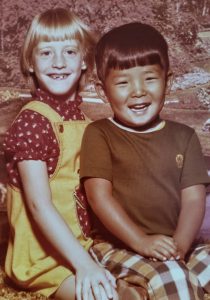 And then there was me… the younger, turtle-necked version… also… in plaid pants.
And then there was me… the younger, turtle-necked version… also… in plaid pants.
I am grateful for those childhood times in a way that I often regret not having the same opportunity to give my own kids: the freedom to explore in a pre-internet world. The nostalgic side would say “times were simpler” back then, but in reality, it always is in the eyes of a wide-eyed 13-year-old with a bowl cut.
And if we are being really honest here, I got a bit misty-eyed in this Clark Griswold-inspired-attic-moment, connecting with these long-forgotten family memories. I unexpectedly discovered a larger history tapping the shoulder of my “today” that is genuinely anchoring this current “life” a bit, especially now.
Listen, I’m very thankful that my parents are in generally good condition—both are about to turn a ripe 80 years young and outside of a few hip surgeries here and there, Mom and Dad Burkett are relatively healthy.
But I worry about them… not because they can’t take care of themselves, but that I want to take care of them. And they want to see their grandkids grow up (which is the entire point of being grand-parents) so they can doddle away and take way too many pictures to fill up way too many photo albums so that their grandkids might have their “attic” moment someday.
To be blunt, this quarantine is every part of lonely for all of us, but it is an absolute terror to our older population.
And as most of the world continues to hunker down, the endless headlines are shining the bright pandemic light on a segment of humanity that has the highest risk of getting seriously ill, the older adults. And more specifically—the elderly population who are currently living in what seems to be a viral tinderbox of nursing homes and similar type long-term care facilities.
The hard numbers are hideous… According to the latest figures, as many as 1.5 million seniors live in nursing homes across the country. More than 28,000 of those seniors and their caregivers have died from coronavirus; combined with nursing home workers, they make up a bludgeoning 35% of all COVID related deaths in the US.
But to level-set the next part of this a bit, we should start by clarifying the difference between nursing homes and Assisted Living facilities.
“There are countless ways the industry has been affected, but I think the industry, specifically IL (Independent Living) and AL (Assisted Living), will need to educate the public on the differences in the care continuum and how they handled and weathered the storm,” said Shannon Remaley, Principal of the Senior Living Studio at Meyer.
Here at Meyer, we have been at the forefront of the world of Senior Living for the better part of the past 20 years. For our Senior Living Studio, and to every single one of the 37 designers and architects, it’s personal—It’s personal to them because they envision their own parents and grandparents lives being directly affected by the power of the built environment and the myriad of ways it can improve the human condition.
Pre-Pandemic, Meyer’s Senior Living studio regularly engulfed themselves within the fabric of normal activities alongside the residents in order to genuinely understand and accentuate all aspects of daily life. Beyond the physical “walls, floors and roofs” of any community, what could be argued as the largest determining factor is really found in the intangibles. From overnight stays to resident inspired bingo nights, the power of social connection continued to steer the “innovation” bus with any community everywhere.
The Senior Living industries are in the business of accentuating the socialization of their communities and COVID has all but obliterated this notion with social isolation. It is a real and disturbing problem and one that has become a true underlying consequence of today’s pandemic era.
But there is some good news percolating thru the murky shadows of all of this…
Remaley added, “Admittedly, the news surrounding long term care facilities for seniors has been grim, and often when you think of seniors, you think of words like ‘frail’, ‘old’, ‘sedentary’ and certainly during this pandemic ‘vulnerable’.” Adding, “However, I have kept in touch with our clients and read the stories of how this crisis is being met, you begin to reveal words like ‘resilient’, ‘determined’, ‘active’ and ‘resolve’.
Reinforcing these sentiments, Matt Wittemann, Director of Client Services at Meyer added, “One the most positive results coming out of this pandemic is that care-takers and staff have rallied together to defeat this virus. The sense of community and desire to help one another is palpable and stronger than ever.”
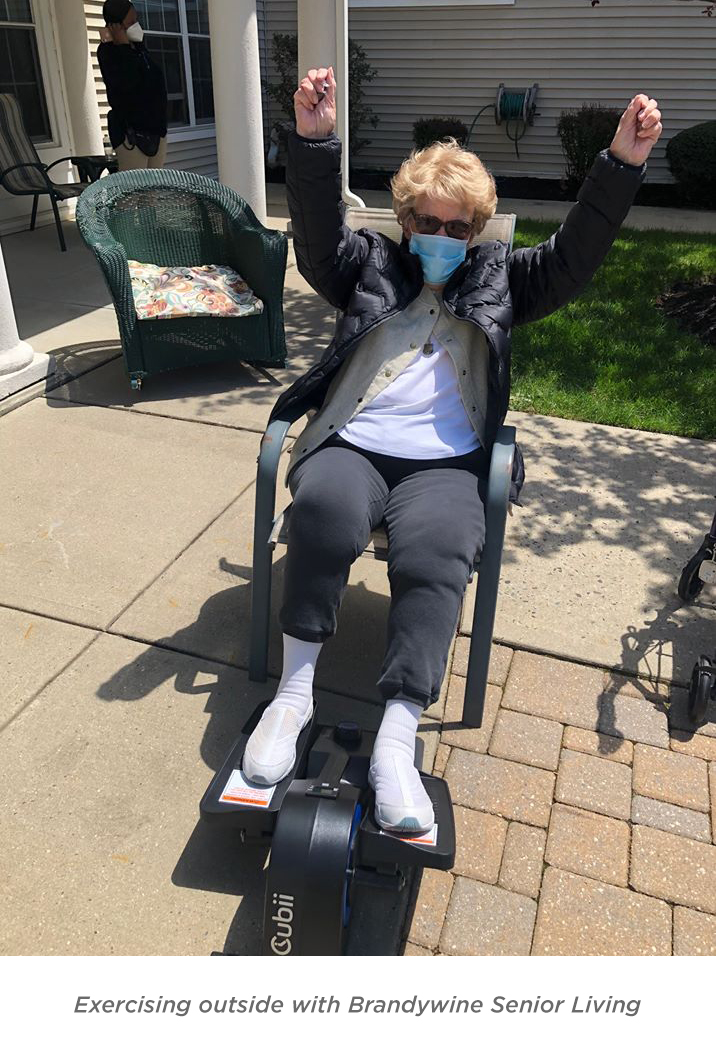
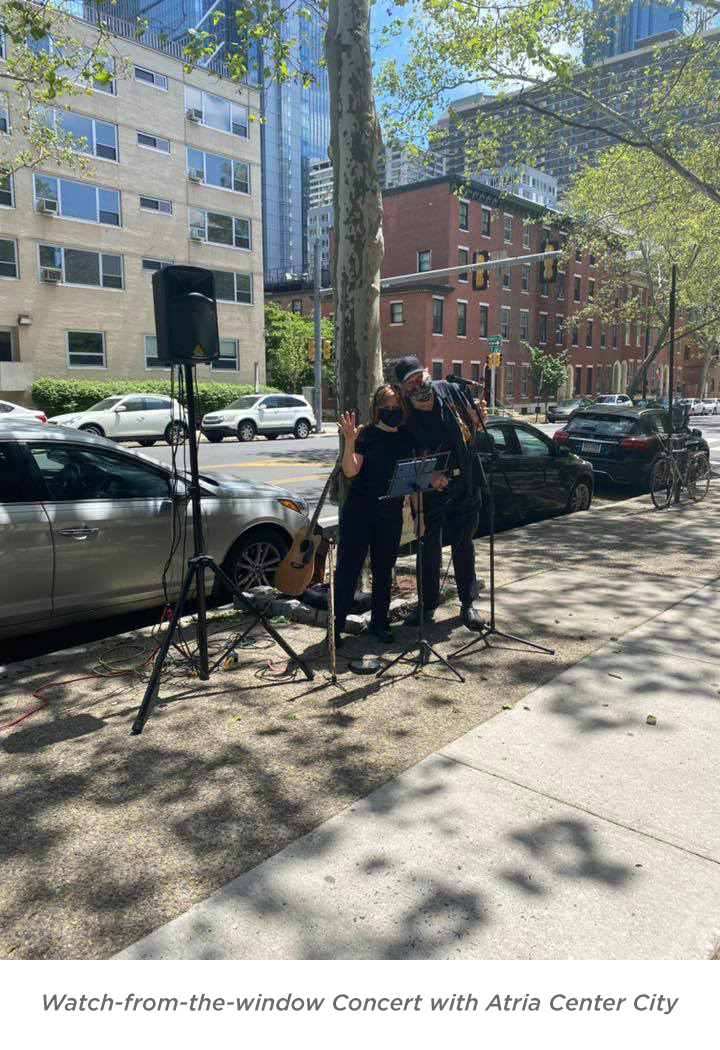
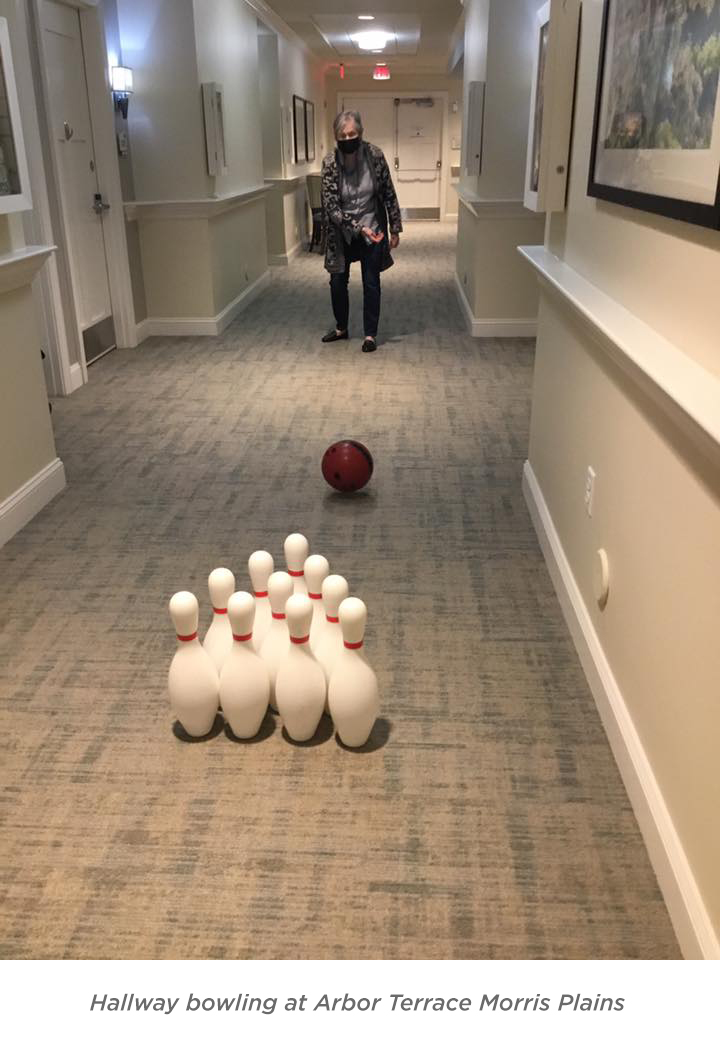
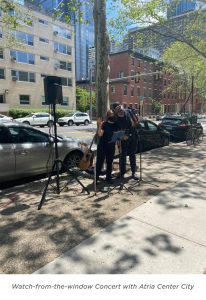
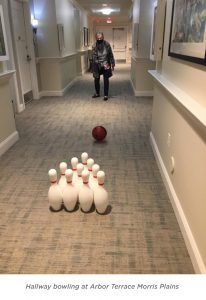
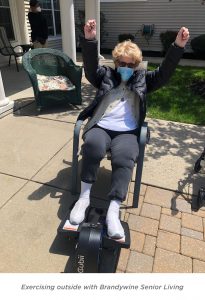
A good number of the Meyer-designed Senior Living communities are starting to get creative and adapt to the new parameters. Some things a few of the Senior Living communities are doing:
- Collecting older iPads that individuals may no longer be using and repurposing them to be used for FaceTiming or loading them with interactive apps
- Isolating some of their common spaces, particularly in Memory Care, by using temporary ‘Zip’ walls that are used in Hospital construction, so that seniors that test positive can still get out of their units and participate in activities together if they are able to.
- There are a number of CCRCs (Continuing Care Resident Communities) that are having outdoor exercise classes
- Assisted Living communities are having ‘distancing bingo’ with residents sitting outside their doors in the corridors.
- Operators are bringing activities, craft demonstrations, cooking lessons, right to the residents’ rooms either through their TVs or in person with one on one sessions.
- Building a mobile plexiglass wall that could be installed over the full entrance opening into the main lobby along with phone handsets so that family could come up to the front door and communicate with and see their loved ones through the plexiglass barrier.
Additionally, the Meyer Senior Living Studio has researched and explored how a few of their Readiness Design philosophies can assist senior living communities during this time which can be found here – https://meyerdesigninc.com/news/readiness-design.
In the end, while we get older, our parents do too. And while video chats are better than no chats, it is what we do because that is all we can do. I am getting old enough to realize the lessons my parents gave me are the ones I owe back to them. That they carry a moxie of their own, and frankly, they know better.
Dan King, Principal of Meyer’s Senior Living Studio said, “Seniors are smart people and over the years have accumulated a depth of wisdom that many of us would envy. They understand the current circumstances and are willing to do what it takes to protect their new friends and fellow residents. Most of those living in Senior Living communities, while it is difficult and isolating, also understand that they are doing less socialization for the greater good.”
Except for maybe nobody, most of us never jotted down the pandemic in our respective vision statements. And so it seems especially important to look for any silver-linings in order to keep from suffocating in this seemingly endless drivel of bad news.
The bright side is medicine will ultimately lasso this pandemic. The reality is we are forever changed in just about every way imaginable – and for our parents, grandparents and the entire elderly community – we can learn from them as much as we should support each of them… with or without the plaid pants.
#goawaycovid
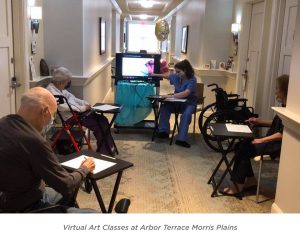
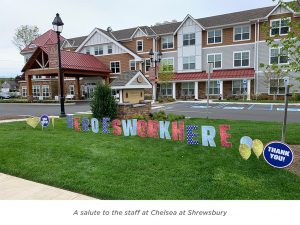
For more information on high-risk populations, visit the CDC’s website.